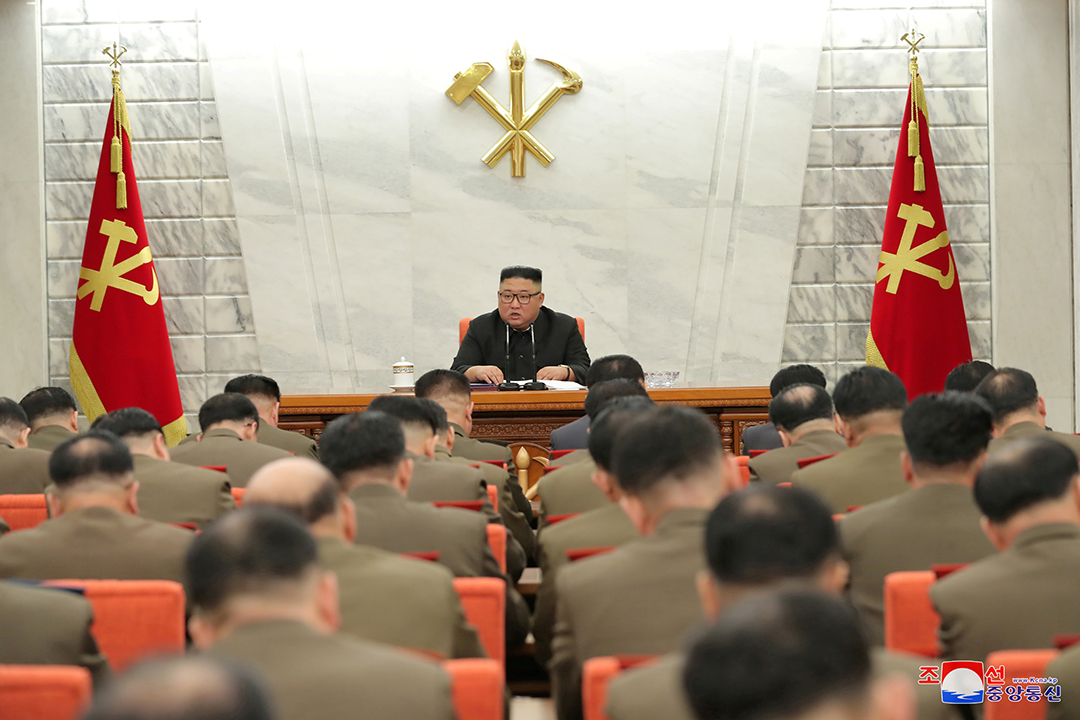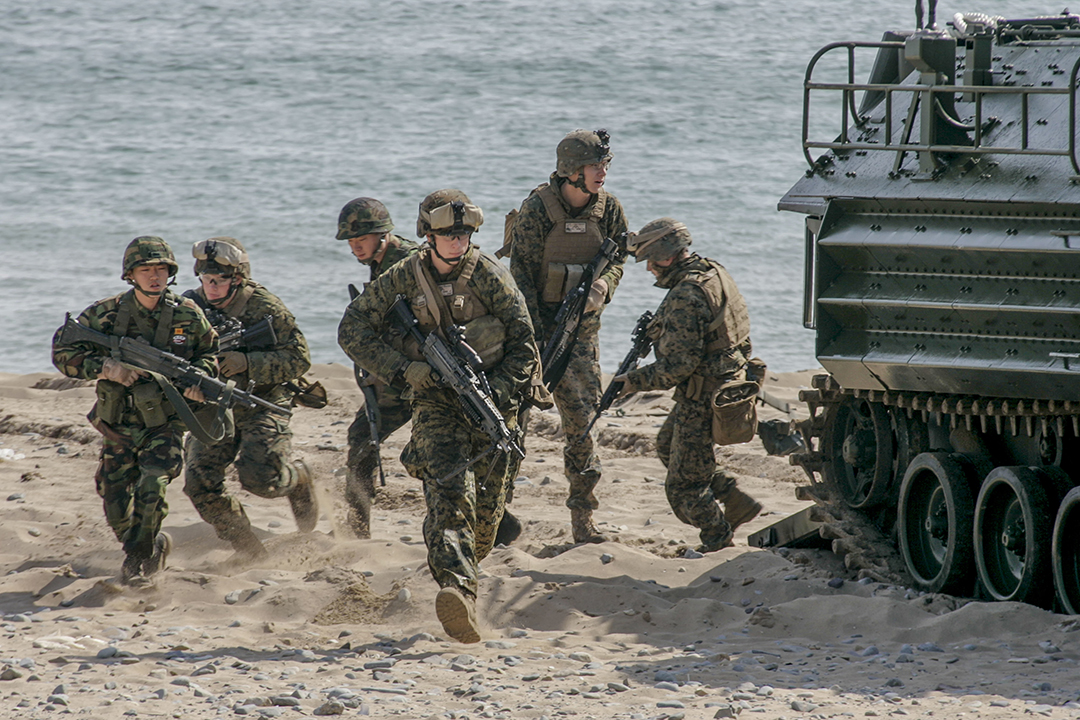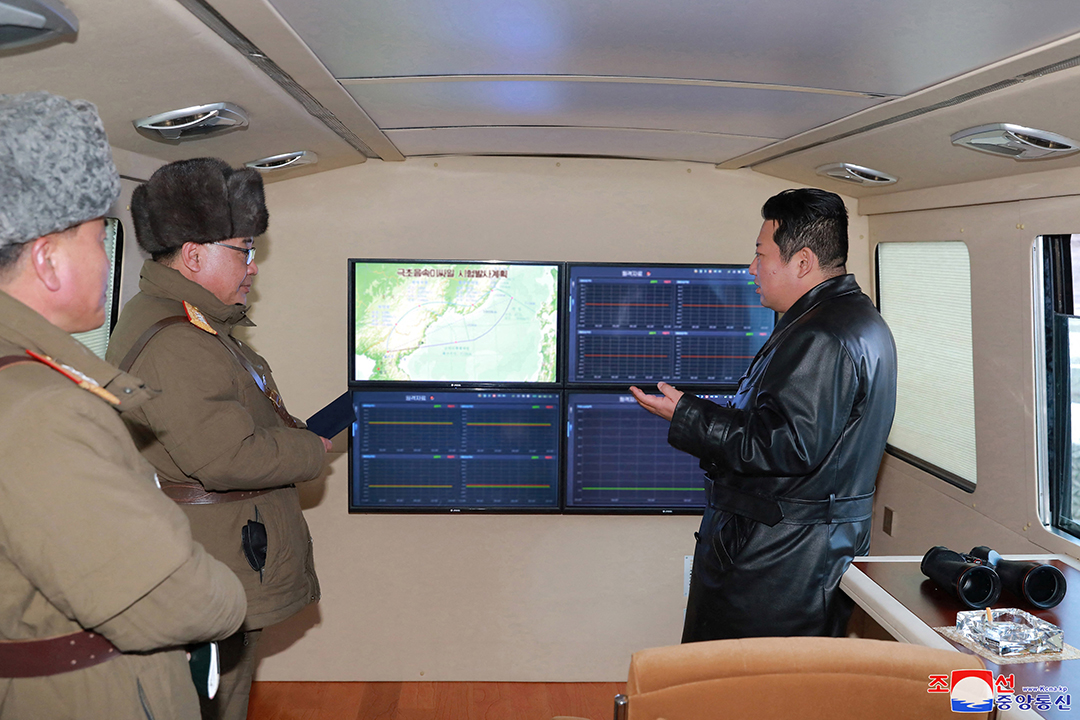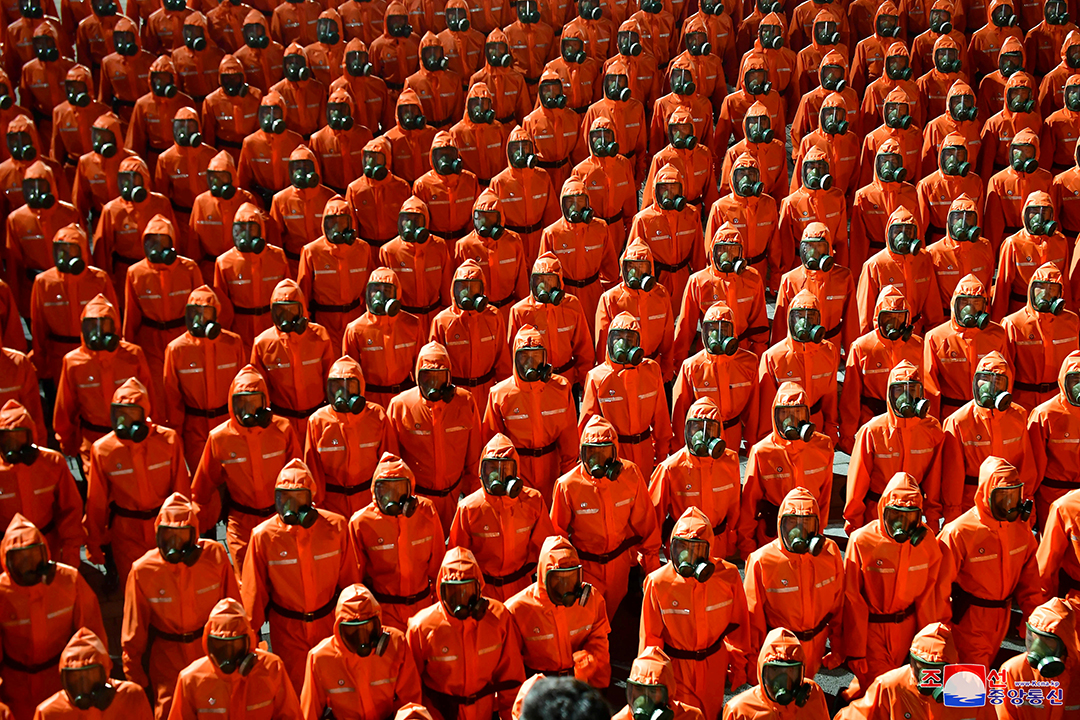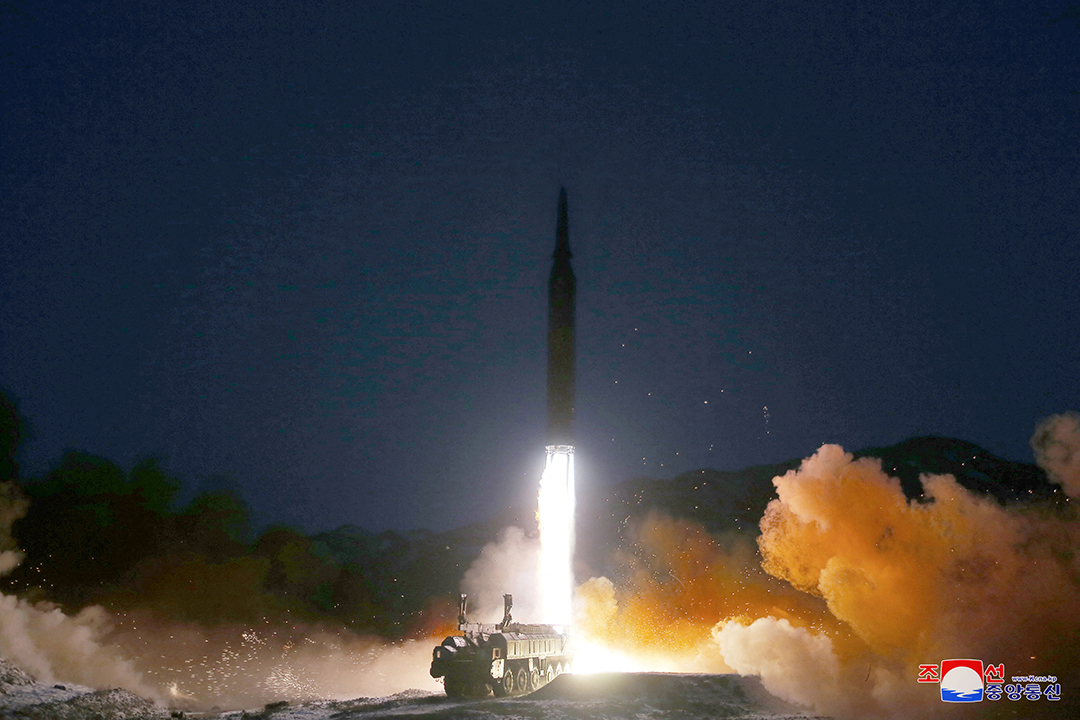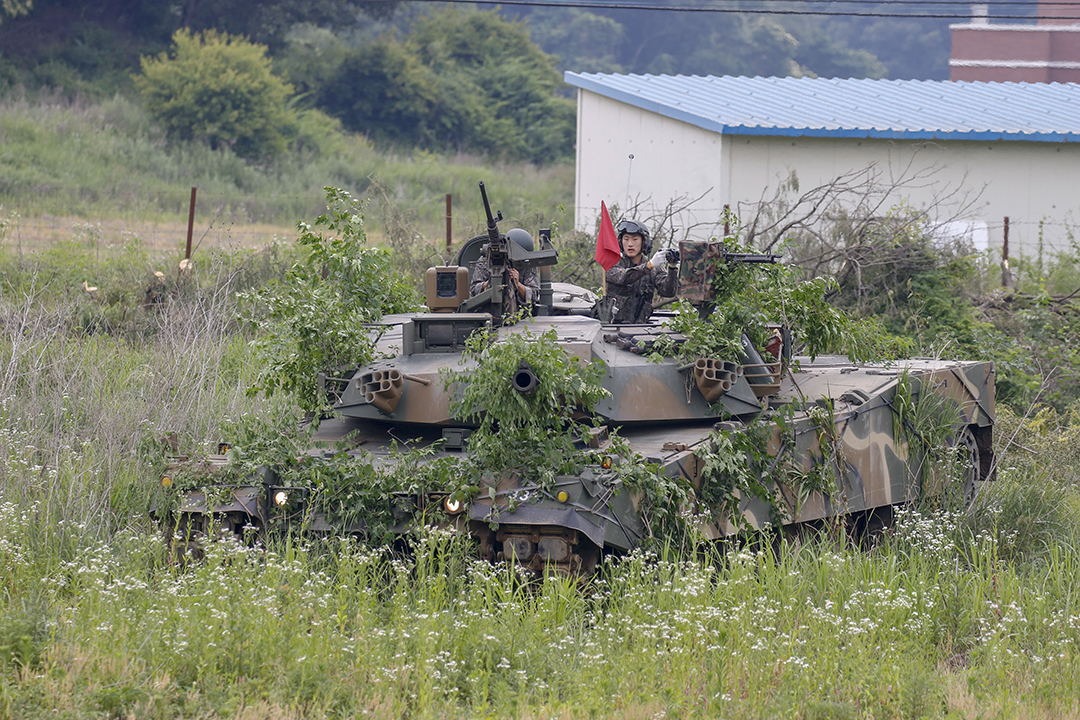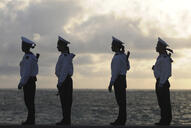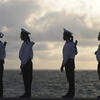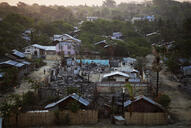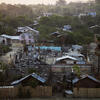North Korea (officially called the Democratic People’s Republic of Korea) is isolated, impoverished, and a proclaimed enemy of its southern neighbor, South Korea (officially called the Republic of Korea)—an important U.S. ally. Kim Jong Un, who inherited the title of supreme leader from his father and grandfather, regularly threatens Japan, South Korea, and the United States with missile strikes. At home, Kim has silenced all opposition by detaining between 80,000 and 120,000 political prisoners, purging high-ranking officials, and likely ordering the assassination of his half-brother.
U.S. military involvement in the Korean peninsula has its roots in the Korean War of the early 1950s during the early stages of the Cold War, in which the United States supported forces in the southern part of the peninsula against communist forces in the north, who were aided militarily by China and the Soviet Union. Today, the United States is committed to defending South Korea under the terms of a mutual defense treaty [PDF]. The United States has nearly 29,000 troops deployed in the Korean peninsula for that purpose. In addition to U.S. troops, many of South Korea’s 630,000 troops and North Korea’s 1.2 million troops are stationed near the Demilitarized Zone (DMZ), making it one of the most heavily armed borders in the world.
In violation of UN Security Council resolutions, North Korea continues overt nuclear enrichment and long-range missile development efforts. Although the scale of North Korea’s uranium enrichment program remains uncertain, U.S. intelligence agencies estimate [PDF] that it has enough plutonium to produce at least six nuclear weapons, and possibly up to sixty. Decades of negotiations have so far failed to curb North Korea’s nuclear weapons program; see CFR’s timeline for a detailed history of the talks.
In September 2017, North Korea conducted its sixth nuclear weapons test, its most powerful test to date. It also claimed to have developed a hydrogen, or thermonuclear, bomb, which would represent further advancements in the nuclear program and the ability to build more powerful, higher-yield nuclear weapons. In the same year, the country conducted its first successful test of an intercontinental ballistic missile (ICBM), and U.S. intelligence agencies determined that North Korea could miniaturize its nuclear weapons to fit inside a missile. However, North Korea has not yet demonstrated that its nuclear warheads can withstand reentry into Earth’s atmosphere.
In response to the increasing frequency of missile tests, the United States has deployed an anti-missile system in South Korea. The Terminal High Altitude Area Defense (THAAD) system is located in the Seongju region of South Korea, one hundred and fifty-five miles from the northern border. Additionally, Japan, South Korea, and the United States maintain unilateral sanctions on North Korea, and the UN Security Council has passed harsh multilateral sanctions. In 2017, the United States placed North Korea back on a list of state sponsors of terrorism, a move that allowed additional sanctions.
In 2018, North and South Korea began a diplomatic rapprochement, and North Korean officials attended the Opening Ceremony of the Winter Olympics in Pyeongchang, South Korea. Kim announced a freeze on weapons testing, attended three summits with South Korean President Moon Jae-in, and met three times with Donald Trump, who became the first U.S. president to step foot in North Korea. At their summits, Kim and Moon signed statements pledging to work toward denuclearization of the Korean peninsula and an official end to war between the two countries. Ultimately, though, nuclear negotiations with the United States reached a deadlock, and North Korea restarted weapons testing in 2019. In 2020, North Korea blew up a North-South liaison office, and Kim announced a new phase in relations, labeling South Korea an enemy.
In 2020, at the start of the pandemic, North Korea implemented one of the world’s strictest border closures, further depressing the country’s economy and exacerbating hunger. However, North Korea did not report any COVID-19 cases for months and in 2021 rejected foreign vaccines. Entry restrictions extended to foreign dignitaries, isolating North Korea almost completely.
North Korea is a nuclear power with a complex relationship with China, and preventing both an interstate Korean war and a North Korean internal collapse are critical U.S. national security interests. Along with continued weapons and missile tests, small-scale military and cyber provocations by North Korea pose significant risks as each incident carries with it the potential for further and potentially uncontrollable escalation. Outright threats from North Korean Supreme Leader Kim Jong-un are also cause for concern, as he claims that North Korean weapons can now reach U.S. territories and even the U.S. mainland.
In 2022, after a two-year lull in testing, North Korea launched a record number of missiles. Frequent tests have continued into 2023 and included its first solid-fuel ICMB, the Hwasong-18, which requires less time to launch and is easier to hide. If successfully developed, it would decrease the probability of success of a pre-emptive strike on North Korea’s arsenal. It also lobbed a missile over Japan for the first time since 2017 and tested a record twenty-three missiles in a single day in November 2022. In July 2023, Kim received high-level Chinese and Russian delegations for the first time in years and vowed to strengthen bilateral relations with each.
In an initial 2021 policy review, the Joe Biden administration outlined a middle-ground approach to North Korea, combining diplomacy and deterrence. In line with that policy, in July 2023, U.S. National Security Advisor Jake Sullivan said the administration was prepared for talks “without preconditions;” days later, South Korean President Yoon Suk Yeol boarded a U.S. nuclear-capable ballistic missile submarine visiting Busan, South Korea.
Yoon has adopted a more hardline stance on North Korea than his predecessor. He called for a reorientation of the unification ministry and has boosted military cooperation with the United States, including by moving the THAAD missile defense system toward full operability. Yoon also committed to improving ties with Japan, and Japanese Prime Minister Fumio Kishida has reciprocated. Biden, Kishida, and Yoon will meet for the first standalone trilateral summit in August 2023 to strengthen strategic cooperation.
Overall, in the last year, both North and South Korea have taken a less compromising position, shored up alliances, and ramped up military provocations and readiness.
